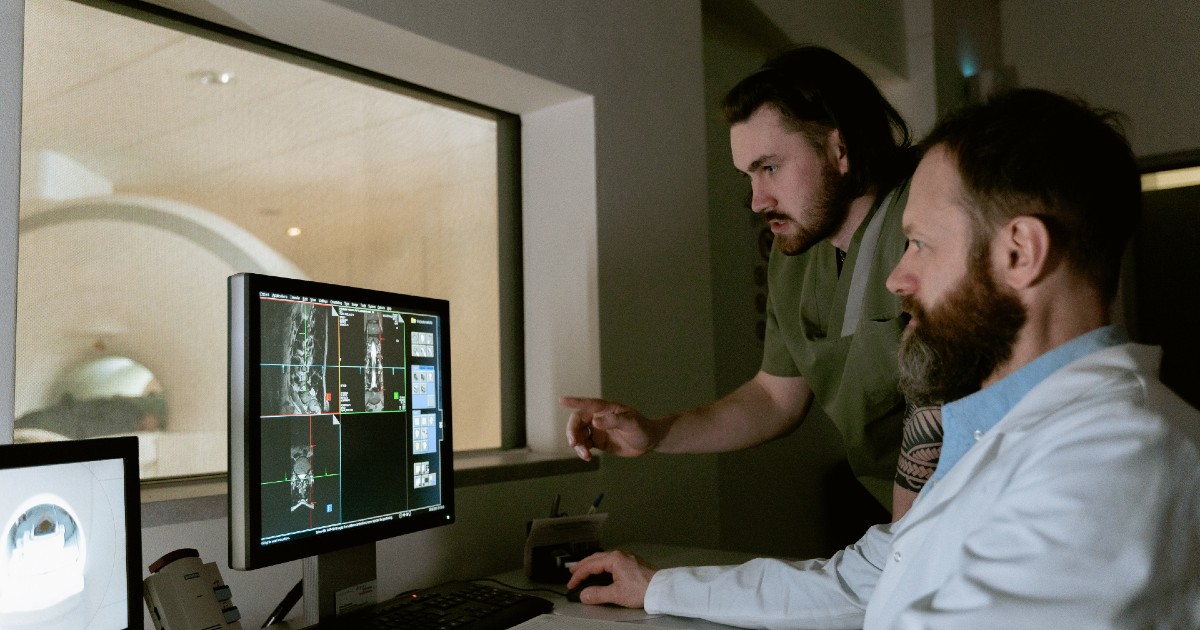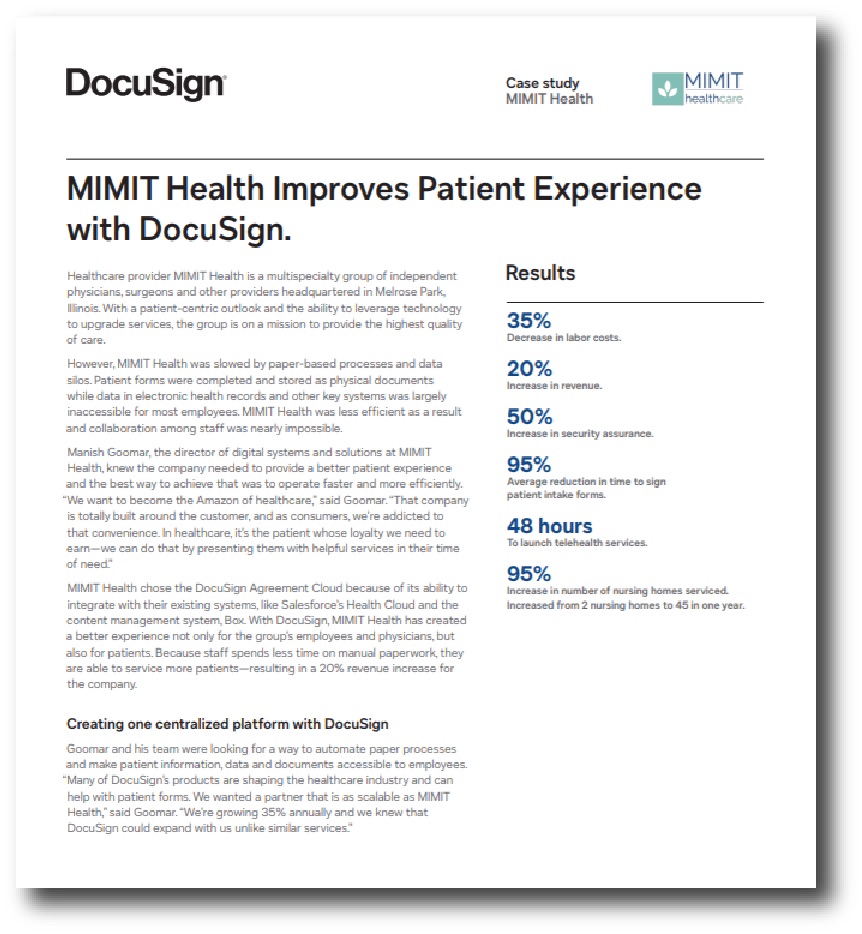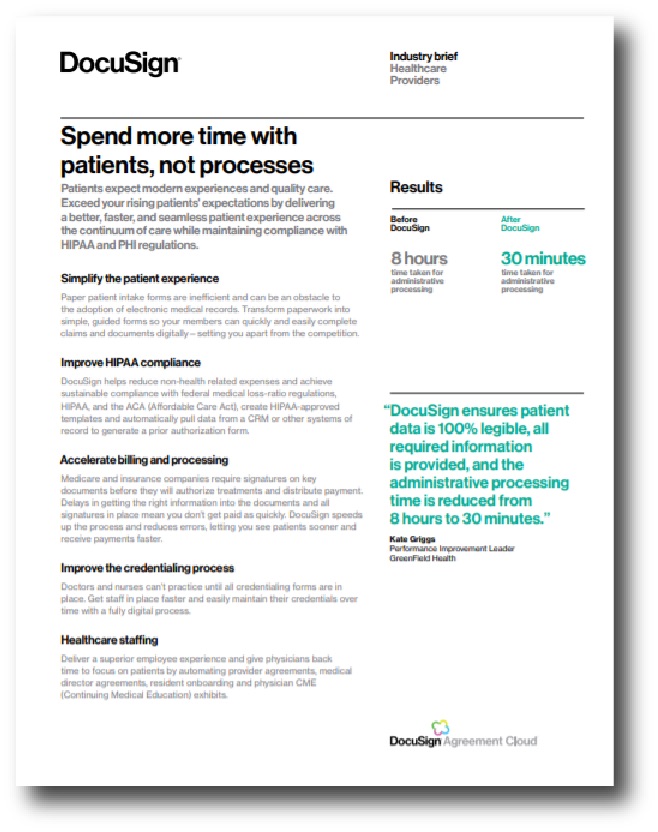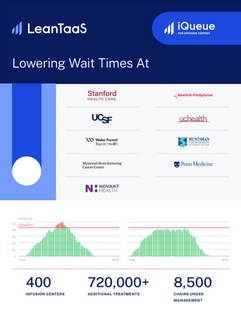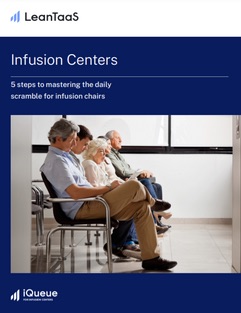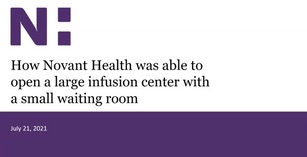Electronic Health Records (EHR, EMR)
As ambient technologies improve, additional use cases to leverage voice will emerge – that leaves us with the question of how patients and physicians are responding to voice-enabled tools in their healthcare encounters.
2022 Look Ahead
Areas of opportunity include data analytics for research, enhancing EHR capabilities and using AI algorithms to support patient care and operational efficiency, says Mike Restuccia.
SPONSORED
MIMIT Health, a multispecialty group of independent providers based in Melrose Park, Illinois, was slowed by manual processes and data silos. Because patient forms were still being stored in paper form and EMR data was inaccessible for most employees, collaboration between staff was almost impossible, which affected efficiency. MIMIT Health chose the DocuSign Agreement Cloud because it integrated with its existing systems to create a better experience for staff and patients alike.
SPONSORED
Patients have come to expect a seamless digital experience from healthcare providers. Exceed those expectations by eliminating paperwork and presenting simple digital forms that improve HIPAA compliance, help patients get seen sooner and get providers paid faster.
Health is in the throes of some of the most significant changes as systems reel from a variety of rapidly changing environments. Dr Charles Alessi, Chief Clinical Officer at HIMSS, explores lessons learned, as we look cautiously to a better 2022.
Block time is an outdated scheduling system that could be leaving the OR unused while patients wait for treatment and new surgeons aren’t able to book time to operate. With iQueue for Operating Rooms by LeanTaaS, hospitals can identify blocks of “collectable” time that isn’t being used and make it available for other surgeons to book. These data-driven decisions have led to greater staff and patient satisfaction and have reduced patient wait times.
Long patient wait times are a constant challenge for infusion centers. And mid-day peaks in usage only make those wait times longer, leaving both patients and nurses dissatisfied. iQueue for Infusion Centers by LeanTaaS uses data science and machine learning to create individualized schedule templates for infusion centers of any size. Managing your staff and resources with iQueue can help boost patient and staff satisfaction, improve patient access and increase revenue.
Oncology infusion treatments are highly individualized and can’t simply be scheduled regularly like hair or spa appointments. Because of the volatile nature of infusion treatment demand, infusion centers run into common problems of long wait times, midday bottlenecks during which chair demand is at or beyond maximum capacity and overworked nursing staff who can’t take time for lunches or days off. By using iQueue for Infusion Centers by LeanTaaS, facilities can develop a mathematically-driven scheduling solution tailored to their own unique circumstances.
Hartford HealthCare operates 7 hospitals and 13 outpatient infusion centers in Connecticut. Hartford HealthCare faced challenges in level-loading appointments across the day, as well as adding in patients and scheduling coordinated infusion visits with clinics. Within two weeks after implementing iQueue for Infusion Centers by LeanTaaS, Hartford HealthCare saw improvement in level-loading of appointments, as well as greater utilization in the early mornings and late afternoons. In addition, nurses used iQueue’s Nurse Allocation tool to build their own acuity grid and balance their workloads.
Presbyterian Medical Center (PMC), a 576-bed tertiary hospital serving Charlotte, North Carolina, is part of the Novant Health healthcare system. PMC operates an infusion center where staff struggled with scheduling patient treatments, leading to high wait times and added stress for staff. Implementing iQueue for Infusion Centers by LeanTaaS helped PMC staff schedule patients more efficiently, reducing midday bottlenecks and creating a smoother patient flow even during the COVID-19 pandemic. The data iQueue captures is allowing PMC to improve workflows, as well as predict and plan for busy times.
